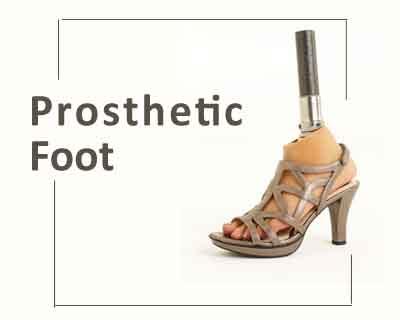- Home
- Editorial
- News
- Practice Guidelines
- Anesthesiology Guidelines
- Cancer Guidelines
- Cardiac Sciences Guidelines
- Critical Care Guidelines
- Dentistry Guidelines
- Dermatology Guidelines
- Diabetes and Endo Guidelines
- Diagnostics Guidelines
- ENT Guidelines
- Featured Practice Guidelines
- Gastroenterology Guidelines
- Geriatrics Guidelines
- Medicine Guidelines
- Nephrology Guidelines
- Neurosciences Guidelines
- Obs and Gynae Guidelines
- Ophthalmology Guidelines
- Orthopaedics Guidelines
- Paediatrics Guidelines
- Psychiatry Guidelines
- Pulmonology Guidelines
- Radiology Guidelines
- Surgery Guidelines
- Urology Guidelines
A prosthetic foot that lets disabled wear heels

Washington: Researchers have developed the first non-custom prosthetic foot to help women who have lost a leg to disease or injury adapt to heels up to four inches high.
Women adjusting to life with a prosthetic limb face the same challenges as men, with perhaps one added complication: how to wear high-heels.
A team of researchers at the Johns Hopkins University in the US has developed 'Prominence', the first prosthetic foot on the market that is not custom made that adapts to popular fashion for heels up to four inches high.
"High heels have become an integral part of the female lifestyle in modern society, permeating through all aspects of life - professional and social," researchers said. Scores of prosthetic feet are available on the market, but most are built to fit men's shoes, and none can adjust to a heel more than two inches high. That is less than the average women's heel height in the US.
With some 2,100 American women who lost a leg or foot in military service, and more women entering combat assignments, the demand for a prosthesis that accommodates women's fashion footwear is sure to grow, researchers said.
The challenge was creating a foot that adjusts without a separate tool to a range of heel heights, holds position without slipping, supports up to 113kg, weighs less than over 1kg and is slender enough to accommodate a woman's shoe. The researchers' work unfolded as a mix of mathematical calculations on paper and trial and error involving tests by machines and people.

Disclaimer: This site is primarily intended for healthcare professionals. Any content/information on this website does not replace the advice of medical and/or health professionals and should not be construed as medical/diagnostic advice/endorsement or prescription. Use of this site is subject to our terms of use, privacy policy, advertisement policy. © 2020 Minerva Medical Treatment Pvt Ltd